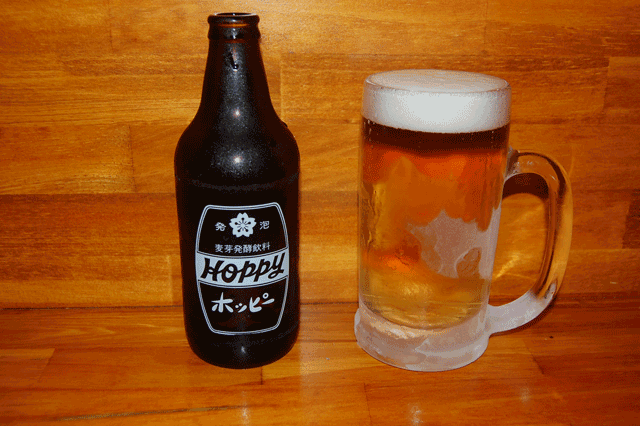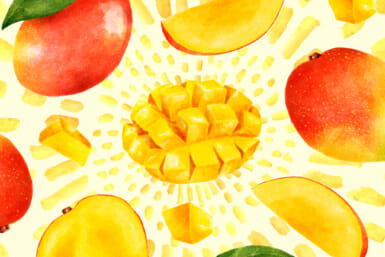An ode to one of the city’s old school tipples, with more than a bit of history on the side.
By Charles Lewis
Living around Tokyo has its advantages: easy access to culture, entertainment and business, for starters. Imbibing residents of Tokyo and its environs have something else to be happy about—a drink called Hoppy. With most of the company’s sales coming from the Kanto area, Hoppy is a classic Tokyo drink that was born out of necessity in the shitamachi (downtown) area during the post-war era. Beer was heavily taxed at the time, making it too expensive for most people—it was said back then that a person walking into a bar and ordering a beer would turn heads. The beer tax is still high today, at 77 yen for a 350-ml can.
The Kokuka Company, now known as Hoppy Beverage, came up with a way to stiff the tax man and bring a beer-like drink to the masses by creating Hoppy. Because Hoppy contains only 0.8% alcohol it skirts the beer tax and when mixed with lightly taxed shochu—a distilled spirit with an alcohol content of 20 or 25%—it is a viable alternative to beer.
The first bottle of Hoppy was sold in Akasaka (not the first time that the area has spawned a unique beverage: check out Denki Bran when you can) in 1948 and sales took off, helping it become the de facto working man’s “beer.” The drink’s reasonable price helped it attain this position, as well as the fact that it goes well with a wide variety of pub fare such as sashimi, grilled fish or meat, boiled vegetables and hearty stews.
Having just the right amount of carbonation, Hoppy is not as filling as beer, contains no gout-causing purines and has only three-quarters of the calories found in beer. Many say Hoppy is easier to drink than wine and sweet cocktails. After its popularity peaked in the 1970s and early 80s, sales of Hoppy began to decline amidst a shochu boom that saw a surge in the popularity of other shochu-based cocktails made with sweet juices and sodas that coincided with the opening of cheap chain izakaya. In addition these were the bubble years, when conspicuous consumption ruled the day and everything new and expensive was considered cool; it’s unlikely that a beverage born of lean times would fit in with all of this free spending.
Things began to improve around the turn of the millennium, however, due mainly to the efforts of Ms. Mina Ishiwatani, the granddaughter of the founder of the company and current president. Ishiwatani was tireless in the promotion of Hoppy: she published a book about it, appeared in print media and on TV, had the Hoppy logo painted on trucks distributing the drink, pursued online sales, launched a site for the drink and started a blog to communicate with fans of the drink. Being a woman in an established, male-dominated company, Ishiwatani initially met resistance to her techniques, especially from the conservative craftsman who had came up with the original recipe for the drink, but she persevered and eventually sales rebounded.
Hoppy is prepared by placing one shot of shochu for a single, or two shots for a double, in the bottom of a tall glass and then pouring in the Hoppy. There is much debate on what kind of shochu should be used to make a Hoppy and how fast it should be poured into the glass. Some prefer a sweeter shochu, while others like a neutral taste; meanwhile, some pour their Hoppy into the glass quickly to get more foam and others pour slowly to get a smaller head.
Another Hoppy method is the naka soto, or “inside-outside” method. Intrepid drinkers pour about half a bottle of Hoppy over a shot of shochu and when their glass runs dry, order another shot of shochu and pour the remainder of the bottle in over that. You can drink Hoppy on the rocks, but this is looked down on by connoisseurs, who hold that a proper Hoppy is served with both the shochu and Hoppy chilled (sometimes the glass is chilled as well).
Izakaya, yakitori bars and yakiniku restaurants are the most common types of establishments serving Hoppy but it can also be found in Western-style bars and restaurants. And if you’d like to practice your Hoppy technique at home before you take it to the streets, you can find it in many Kanto supermarkets—and even online [Japanese only] for those living outside of the Tokyo area who want to get in on the fun..









